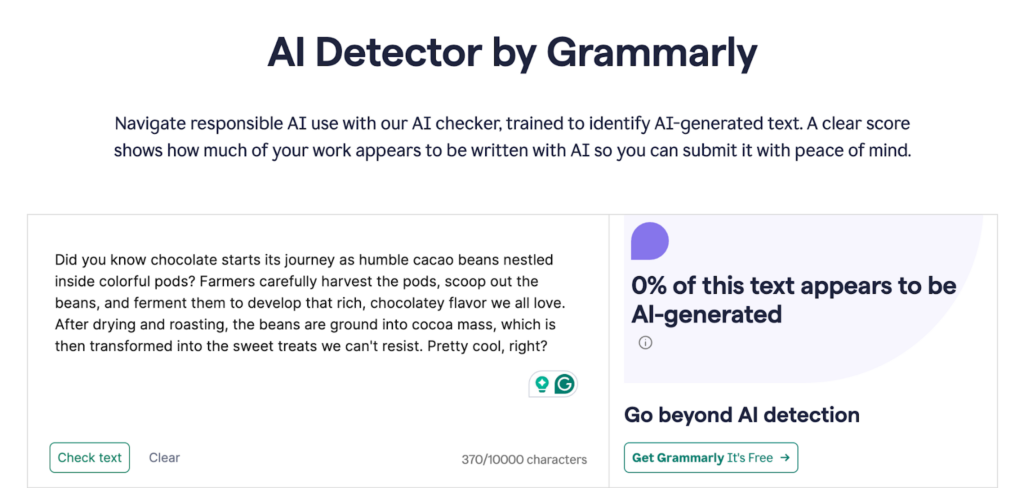AI is everywhere these days—self-driving cars, virtual assistants like Siri and Alexa, even that weird “recommended for you” section on your favorite shopping site. It’s even crashed the writing party. Tools like ChatGPT and OpenAI’s GPT-3 have been making headlines for their ability to generate human-like text.
But lately, we’ve noticed that with all this fancy new writing tech comes a bunch of myths and misconceptions about AI. And if your company publishes content or uses a marketing agency to generate copy, you might be a little wary of these new advancements. Let’s dive into some common myths about AI writing to set the record straight.
The Rise of AI Content Creation (AI Writing Takeover?)
You’ve probably heard the argument about whether AI-generated content will take over the world of writing. Why is this topic so popular?
The truth is, the sheer demand for content has increased dramatically. Think about how many digital platforms are out there: websites, social media, online stores, newsletters. All of them need fresh, engaging content to keep their audience engaged. That’s a lot of writing, and exactly where AI content creation comes in.
The reason you’re suddenly hearing about AI content is simply because these tools are more accessible and user-friendly than ever. AI has evolved insanely fast—no longer rudimentary spell-checkers, they’re now complex systems capable of turning your pet into a person and writing full-blown novels.
Case in point: this is my cat as a human thanks to ChatGPT.
So, is AI any good? Will it take over the creative process entirely? And most importantly, will it replace human writers?
5 Misconceptions About AI You Probably Believe
Both sides of the AI argument have some misunderstandings about its capabilities. Let’s demystify some of the most common misconceptions to see where AI truly stands.
Myth 1: You Can Always Tell When Content Is Written By AI
People tend to think that AI-generated content is easy to spot because it’s lifeless and robotic. While this may have been true in the early days, AI has come a long way in mimicking human writing styles. Just take a look at this ChatGPT-generated response:
After reading that, would your first thought really be, “This was written by AI”?
Myth 2: Using an Em Dash Means the Content Is AI-Generated
This myth personally affects me because I am an avid em dash user. It’s such a versatile piece of punctuation; it can be used for emphasis, interruption, or to set off a clause.
I will admit that AI tools love using em dashes more than the average human writer, but a couple of em dashes DO NOT automatically mean the content was generated by AI! Our content team is filled with college-educated writers who have been using (and loving) em dashes for years. Immediately thinking an em dash was AI-generated might be more of a statement on the abysmal condition of our grammatical education across the U.S. and not a ChatGPT red flag.
Myth 3: AI Detectors Can Perfectly Identify AI-Generated vs. Human-Written Content
This is a huge misconception about AI. While AI detectors can definitely help identify some patterns and language choices that are more likely to be generated by AI, they are far from perfect.
One of our content writers at Lemonade Stand proved this point by testing a popular AI detector with content she had written herself. The result? The AI detector confidently labeled her human-written content (and even direct quotes from coworkers) as being generated by AI.
I decided to try the opposite: testing a paragraph written solely by AI with popular company Grammarly’s AI checker. Take a look at the results!

Myth 4: AI Content Doesn’t Need Fact-Checking
As much as I wish it were true, AI-generated content is not immune to mistakes. Just like human writers, our overly enthusiastic robot friends can make errors and present inaccurate information. In 2023, news outlet CNET used an internal AI tool to write 77 publications. They later found that these articles contained plagiarism, incorrect math, and false information.
AI-generated content may draw from a huge database of information, but it still needs a human eye to check for accuracy. Plus, AI will struggle to pick up on any cultural references and nuances.
Myth 5: Using AI for Content Is Easier Than Hiring an Agency
While AI-generated content may seem like the perfect solution for creating large amounts of content quickly and easily, it’s not as simple as pressing a button and waiting for the magic to happen. Here’s a quick overview of all the steps involved in using AI for content creation:
- Give the Right Prompt: First, you have to learn how to create the perfect prompt for the AI to work with (which can be extremely frustrating, as a writer who works with prompts on a daily basis).
- Edit & Rewrite: Next, you have to carefully review and edit the content generated by the AI for accuracy, tone, and style. This can involve a ton of rewriting that defeats the purpose of using AI in the first place.
- Add SEO Optimization: AI is not the best at optimizing content for search engines. You’ll most likely see keyword stuffing, robotic-sounding sentences, and bland titles. This means you’ll still have to manually add SEO elements to your content to ensure it ranks well in search engine results.
- Track Content on a Publishing Calendar: You also need a detailed publishing calendar to ensure that the AI-generated content doesn’t clash with any existing or future content.
- Review Overall SEO Strategy: Content marketing involves more than just writing words on a page. It requires advanced SEO strategy, long-term planning, and a deep understanding of your audience. An AI tool simply can’t replicate this amount of work and research.
If you ignore these steps completely and choose random topics, you won’t see results.
Partner with Lemonade Stand for Content That Converts
At Lemonade Stand, we specialize in creating content that ranks well on search engines and highlights your company as an industry expert. Our team of writers and strategists spends valuable time researching your brand, industry, and audience so that we can deliver a high-quality content plan that delivers long-term results.
We also combine the personality and expertise of our creative team with an advanced AI tool for the best of both worlds—data-driven content that is still engaging and conversational. Partner with us today and see the difference!


